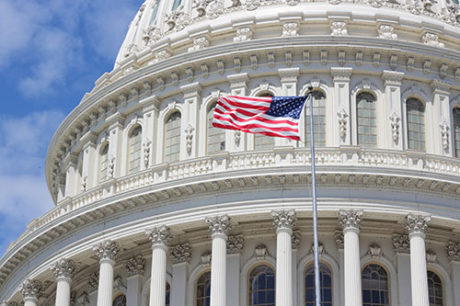
You may have heard of small business set-asides in federal procurement, but have you heard of the Rule of Two? It is commonly known that 23% of the yearly federal contracting budget is set-aside for small business contract spending, with smaller percentage requirements for each set-aside: Women-Owned Small Businesses (5%), Small Disadvantaged Businesses (5%), HUBZone Small Businesses (3%), Service-Disabled Veteran-Owned Small Businesses (SDVOSB) (3%). The Rule of Two is a requirement included in the Federal Acquisition Regulations (FAR) that aims to assist small businesses in their attempt to win federal contracts.
Who controls the Rule of Two? The contracting officer (and of course the FAR). According to the rules of the Simplified Acquisition Threshold (FAR Part 13), small businesses should be winning contracts that are between $3,500 and $150,000. The Rule of Two says that if there are two qualified and competitive small businesses expected to submit an offer between these two amounts, the contract opportunity is automatically set-aside for small business. Any contract above $150,000, according to FAR 19. 502-2b, also must be set-aside for small business if certain requirements are met. The first requirement is that two qualified small businesses must make an offer of products of different small businesses. The second requirement is that fair market prices will be used, and the business must be able to provide the best performance for the best cost and schedule. If these requirements are met, a contract above $150,000 awarded to a small business can count towards the 23% annual small business set-aside goal. And that is the Rule of Two!
What is the controversy? Agencies often interpret pieces of law to benefit their own interests. For example, the Small Business Association has argued that the Rule of Two should be mandatory under Federal Supply Schedules while the Government Accountability Office has argued that it is discretionary. While the Rule of Two generally works very well, there have been instances where it has been called questionable.
A notable example of this is the ‘Kingdomware Technologies, Inc. v. United States’ Supreme Court case, which was settled in 2016. Even though the Veterans Affairs Act (2006) requires the Department of Veteran Affairs to restrict competition to small businesses owned by veterans if the Rule of Two applies, they did not comply. The first opposing claim was that the Rule of Two did not have to be applied if the VA had already met its Veteran Owned Small Business or SDVOSB set-aside goal. It was then argued that the term ‘contract’ did not include orders on the Federal Supply Schedule.
The result? The Court ruled that before any contract is awarded, the VA must apply the Rule of Two to VOSBs/ SDVOSBs, even if it has already met its small business contracting goals. Essentially, if two veteran-owned businesses that meet the set requirements are expected to make an offer, the contract must be set-aside for one of the two to win the VA contract, no matter what. The Court also determined that ‘contract’ includes orders placed under the Federal Supply Schedule Program. The VA has since made tremendous effort to meet these standards.
While the Rule of Two can be confusing at times, hopefully, agencies will continue to follow the standards of the Rule of Two to ensure that small businesses have a sufficient number of federal contracting opportunities to respond to.
 Like
Like








There will ALWAYS be at least two small businesses that say they can do any type of work. If followed, then all work would only go to small businesses. While there are places that a small business makes sense (simple project, mature technology, the risk and impact of failure is low, etc.), there are also places where you want to have a large business support you (all those opposite scenarios listed before).
While there may ALWAYS be at least two small business that SAY they can do that type of work, each candidate has to provide the servicing Contracting Office with a capabilities statement. Upon receipt, the statements are analyzed against the requirements and further research is done to verify that the assertions set forth in the capabilities statement are accurate (e.g., checking their website and seeing no mention of said capability there). Then – and only then – is the solicitation set-aside.
I am attempting to get “HUD” and “VA” contracts to sell their foreclosed house as a LISTING BROKER. I am finding out that their contractors do not follow the FAR or the Rule of Two…Can you provide and help with this??